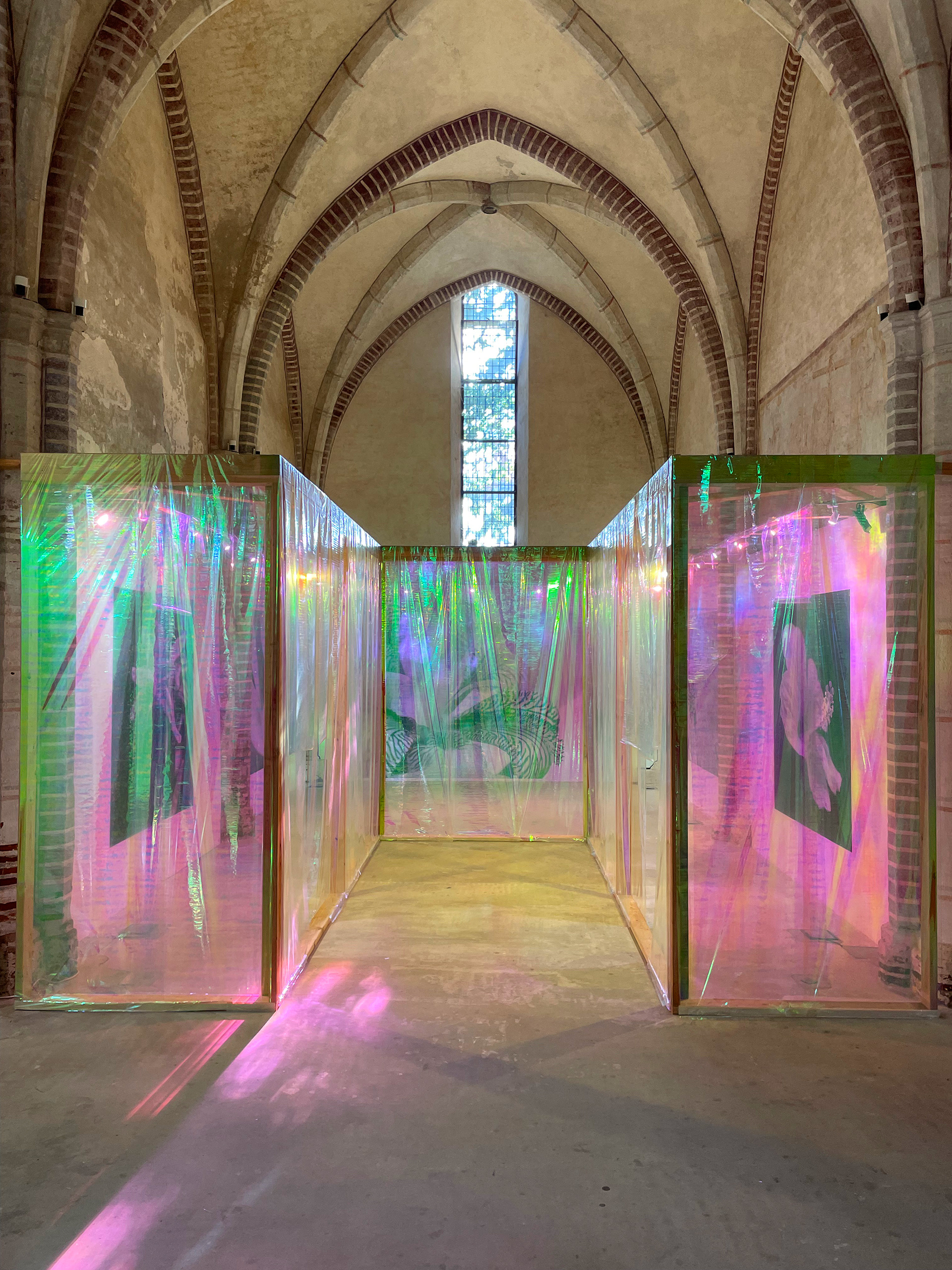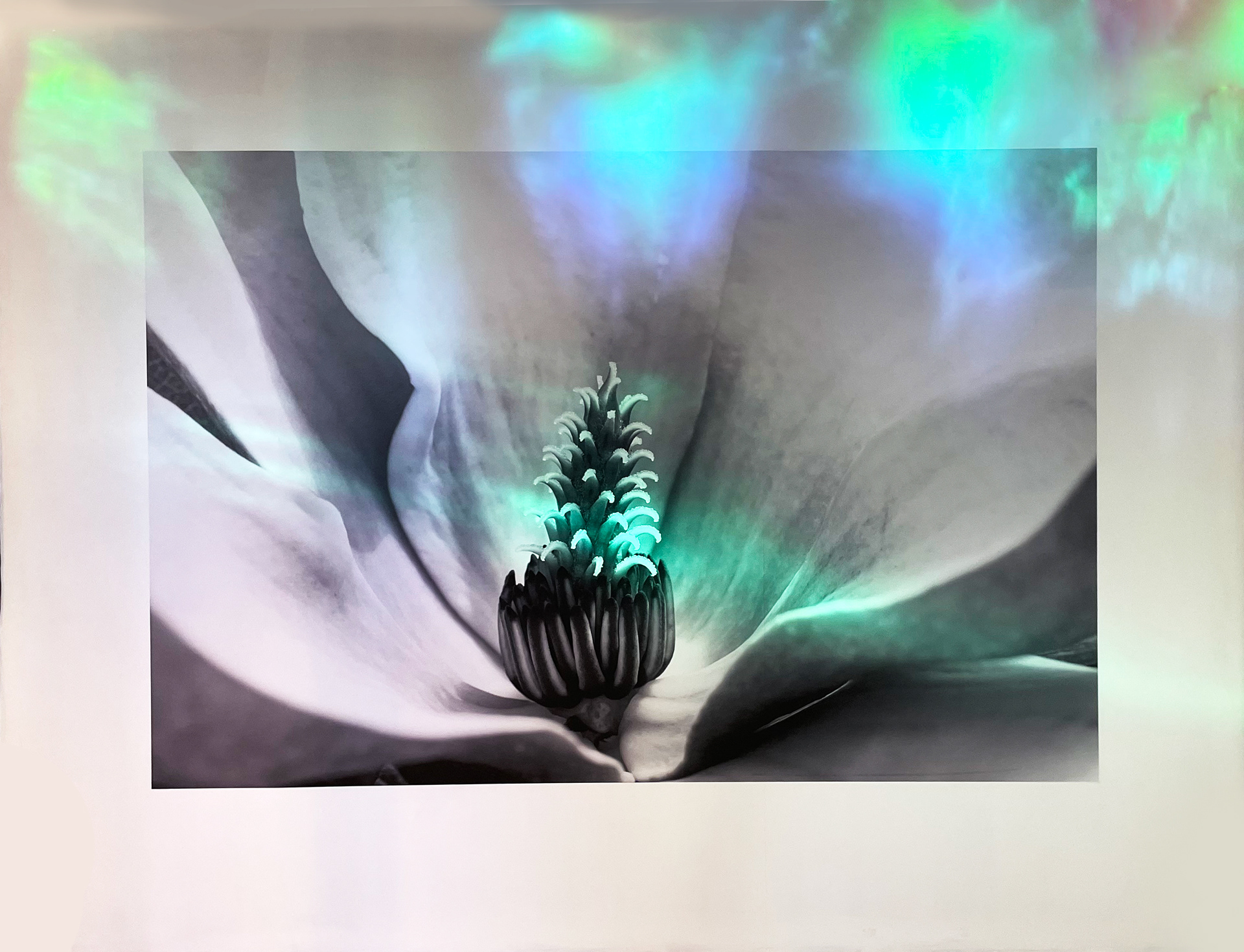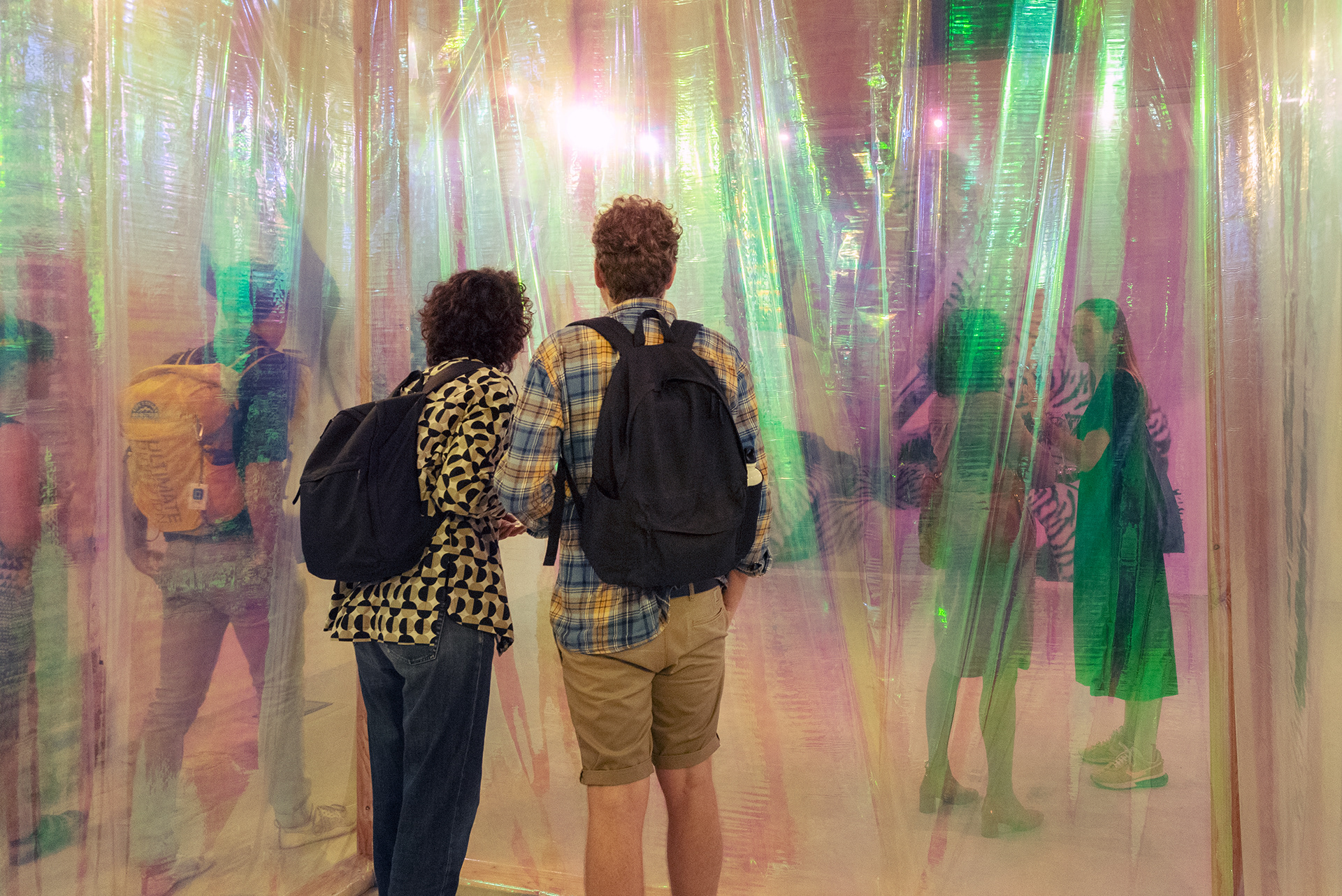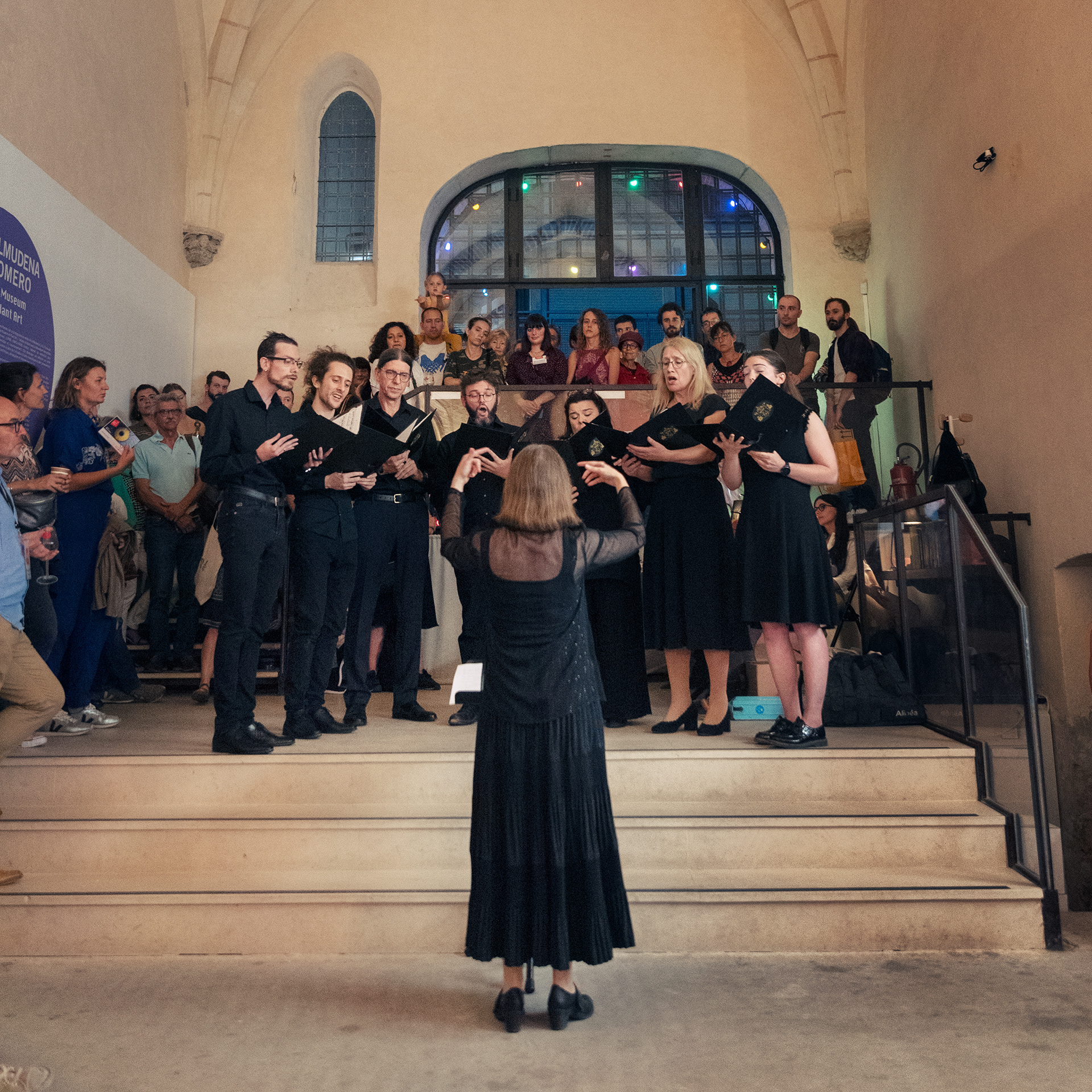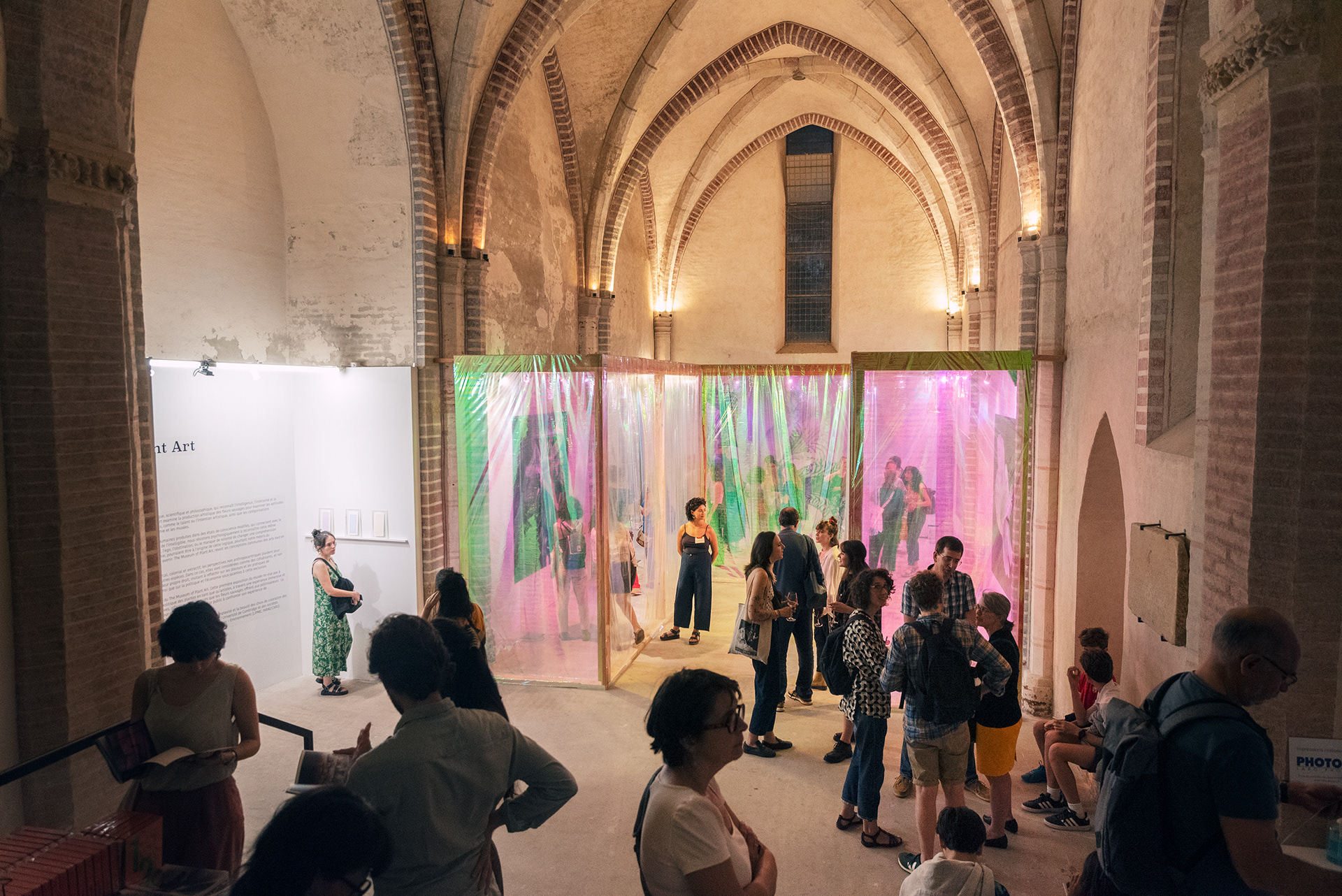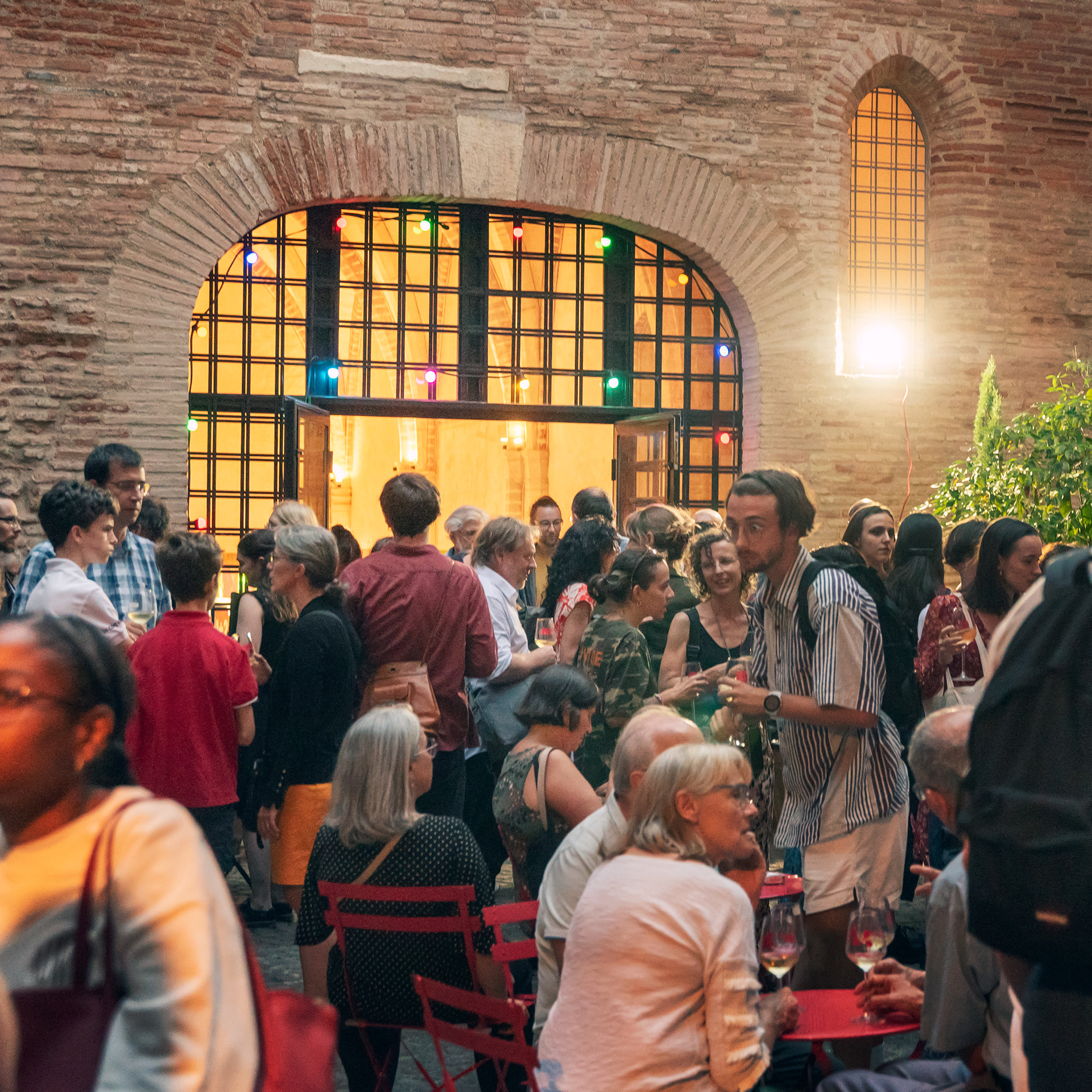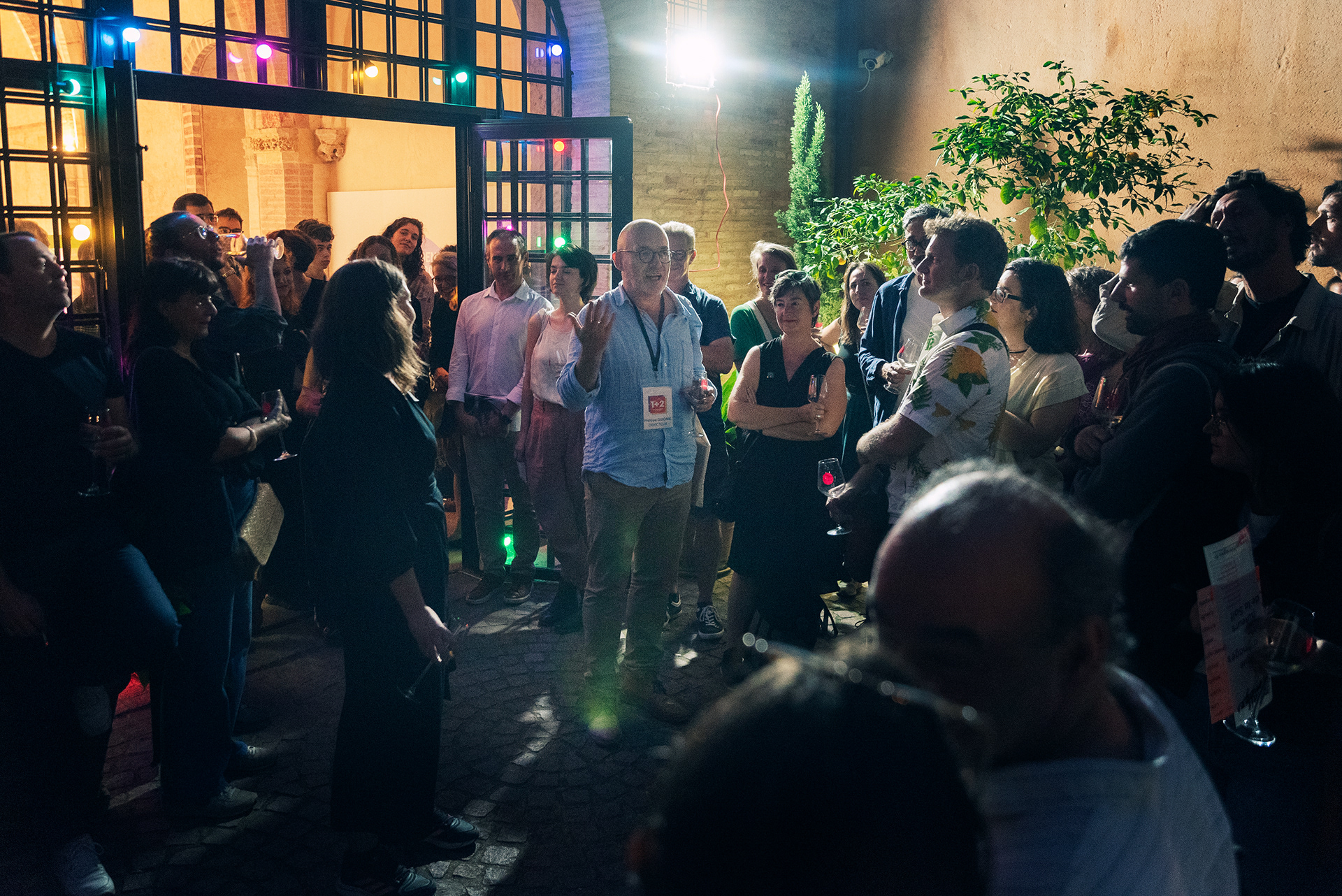Saatchi Gallery
Flora — Flowers in contemporary culture
Feb 2025 - Sep 2025
Feb 2025 - Sep 2025
For the exhibition Flowers – Flora in Contemporary Art and Culture at Saatchi Gallery, The Museum of Plant Art presented some of the iridescent plates exhibited previously at the Maison Européenne de la Photographie. An evocative selection of black-and-white photographs UV-printed onto glass and acrylic pieces infused with nano-crystals. These innovative surfaces, developed by the University of Cambridge and its spin-off company Sparxell, harness the extraordinary optical properties of iridescent vegetal cellulose—a material in which plant-based microcrystals self-assemble to create a mesmerising, shifting interplay of light and colour.
The black-and-white imagery, layered onto these shimmering surfaces, seeks to emulate how pollinators perceive flowers at varying focal distances. By unveiling these complex visual experiences, the Museum of Plant Art explores the profound and intricate relationships between flora and their pollinators. In doing so, the work invites viewers to consider these natural interactions as artistic expressions crafted by nature.

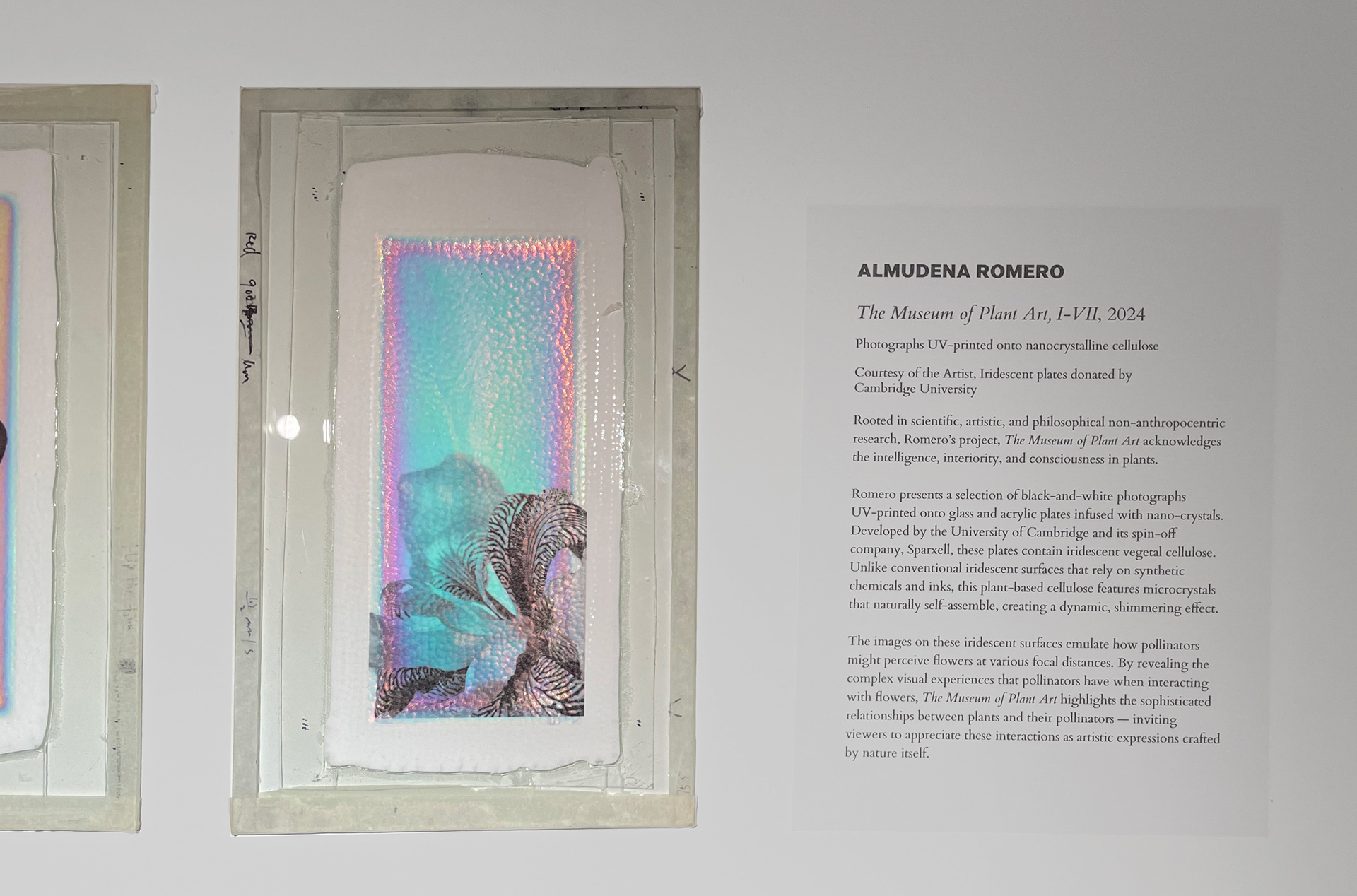

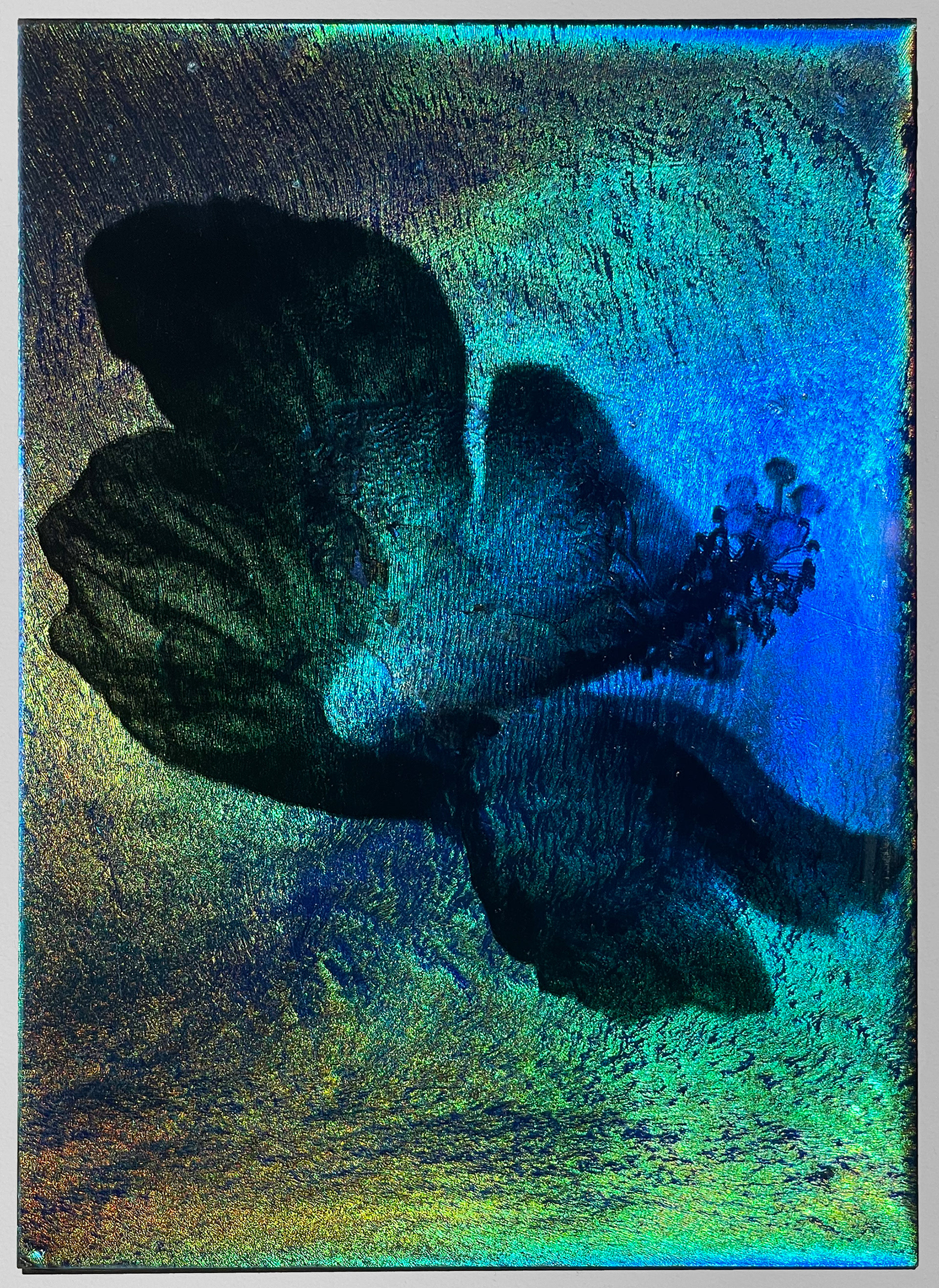
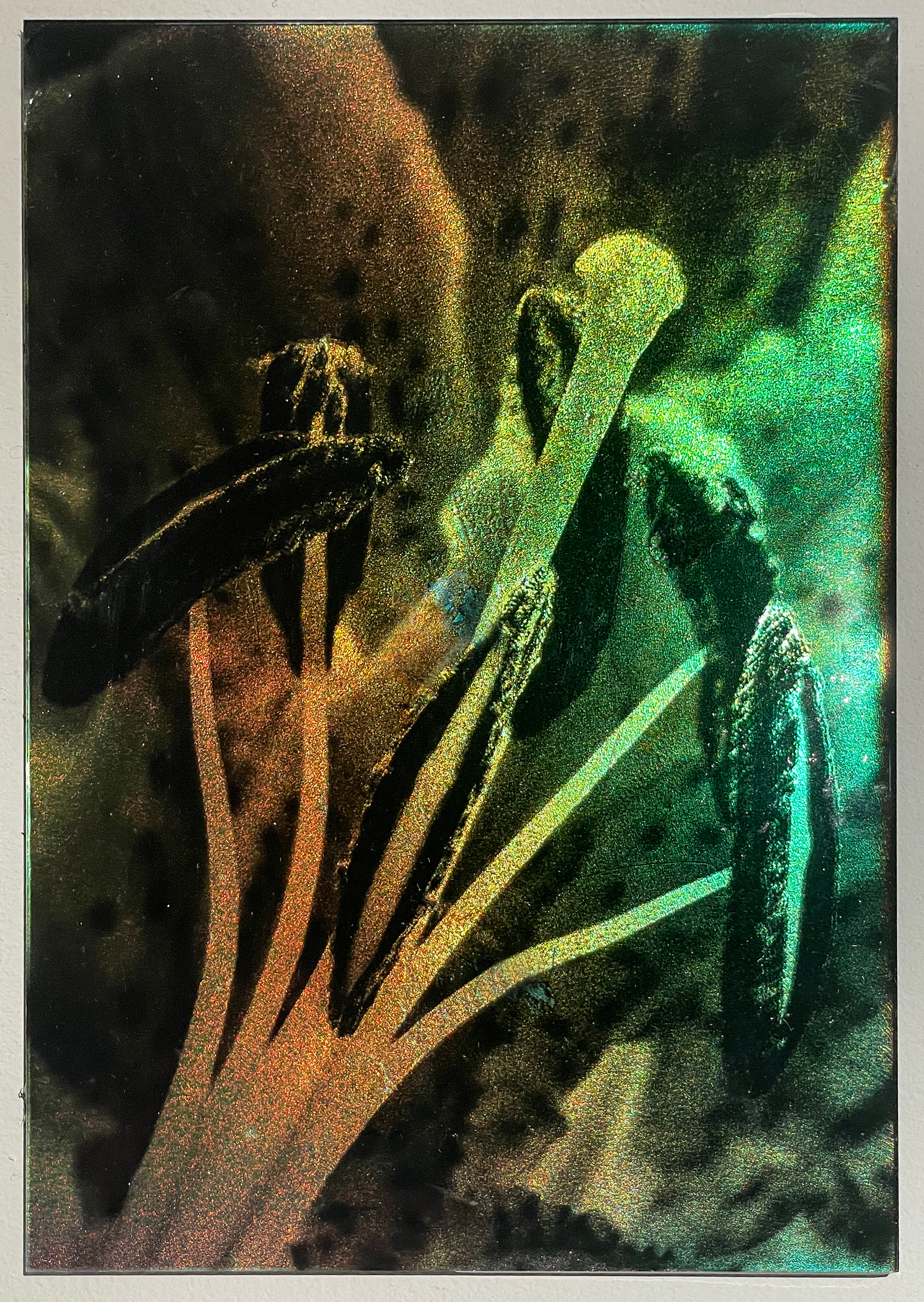
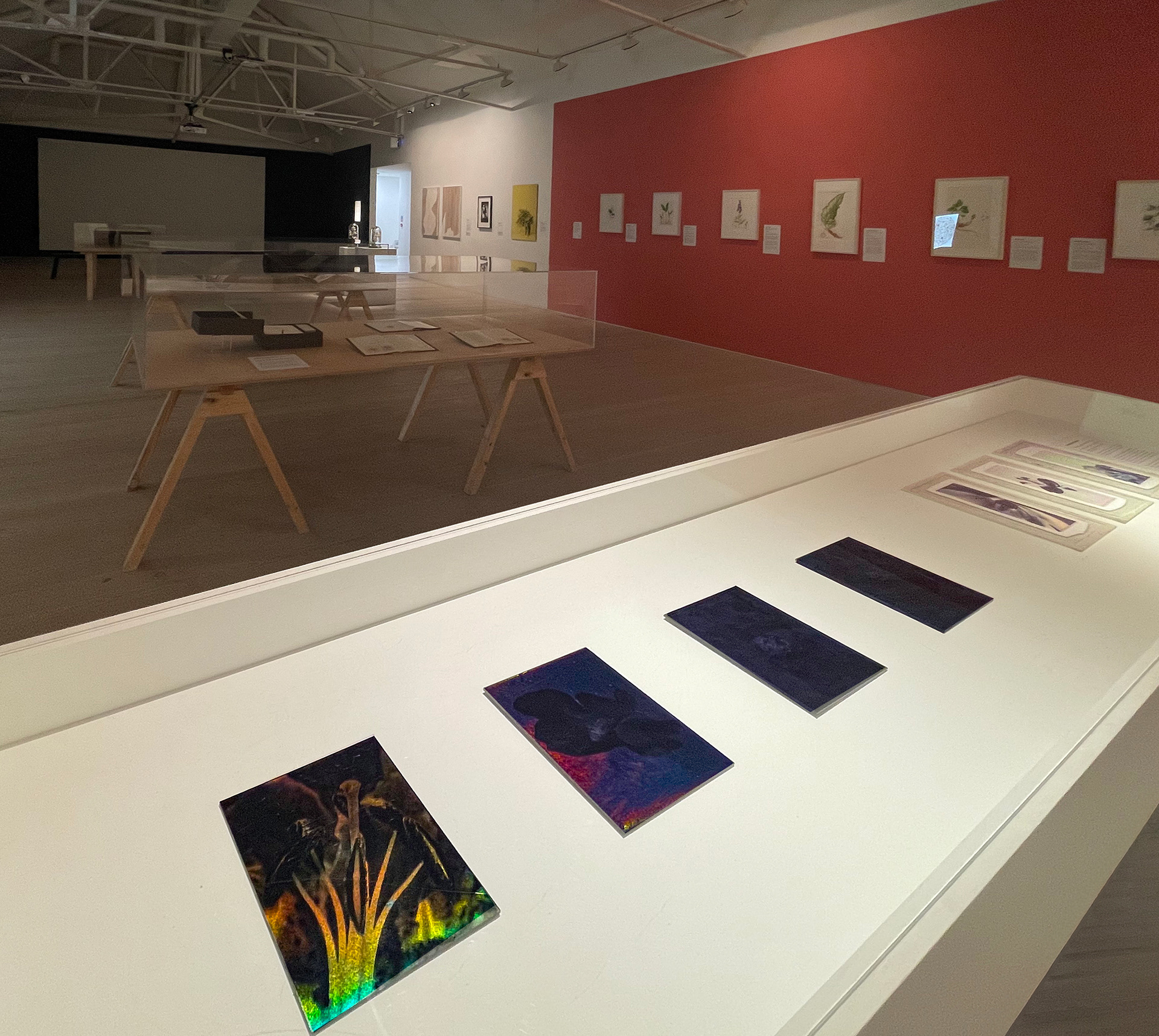
Maison Européenne de la Photographie
Science/Fiction — A Non-History of Plants
Oct 2024 - Jan 2025
The Museum of Plant Art’s second exhibition unveiled a captivating series of black-and-white photographs UV-printed directly onto glass and acrylic plates covered with a nano-crystalline iridescent vegetal cellulose. These plates, generously provided by the University of Cambridge and its spin-off company Sparxell, mark a pioneering step in sustainable iridescent materials. Unlike conventional surfaces reliant on synthetic chemicals and inks, these plates use plant-based cellulose with microcrystals that naturally grow to create a dynamic, shimmering effect. The UV-printed black-and-white images on these iridescent plates emulate the way pollinators might perceive flowers. This artistic approach sheds light on the complex visual experience of pollinators, revealing the sophistication in their relationship with plant life.
To deepen this immersive encounter, the exhibition integrates large black-and-white wallpaper prints alongside the iridescent plates, portraying plants at varying focal distances—from expansive landscape views to abstract close-ups. This variety of perspectives encourages audiences to contemplate the diverse visual experiences pollinators may have. Through this layered approach, the exhibition illustrates the intricacy of plant-pollinator interactions and invites viewers to consider these interactions as aesthetic, artistic expressions crafted by the plants themselves.
Oct 2024 - Jan 2025
The Museum of Plant Art’s second exhibition unveiled a captivating series of black-and-white photographs UV-printed directly onto glass and acrylic plates covered with a nano-crystalline iridescent vegetal cellulose. These plates, generously provided by the University of Cambridge and its spin-off company Sparxell, mark a pioneering step in sustainable iridescent materials. Unlike conventional surfaces reliant on synthetic chemicals and inks, these plates use plant-based cellulose with microcrystals that naturally grow to create a dynamic, shimmering effect. The UV-printed black-and-white images on these iridescent plates emulate the way pollinators might perceive flowers. This artistic approach sheds light on the complex visual experience of pollinators, revealing the sophistication in their relationship with plant life.
To deepen this immersive encounter, the exhibition integrates large black-and-white wallpaper prints alongside the iridescent plates, portraying plants at varying focal distances—from expansive landscape views to abstract close-ups. This variety of perspectives encourages audiences to contemplate the diverse visual experiences pollinators may have. Through this layered approach, the exhibition illustrates the intricacy of plant-pollinator interactions and invites viewers to consider these interactions as aesthetic, artistic expressions crafted by the plants themselves.
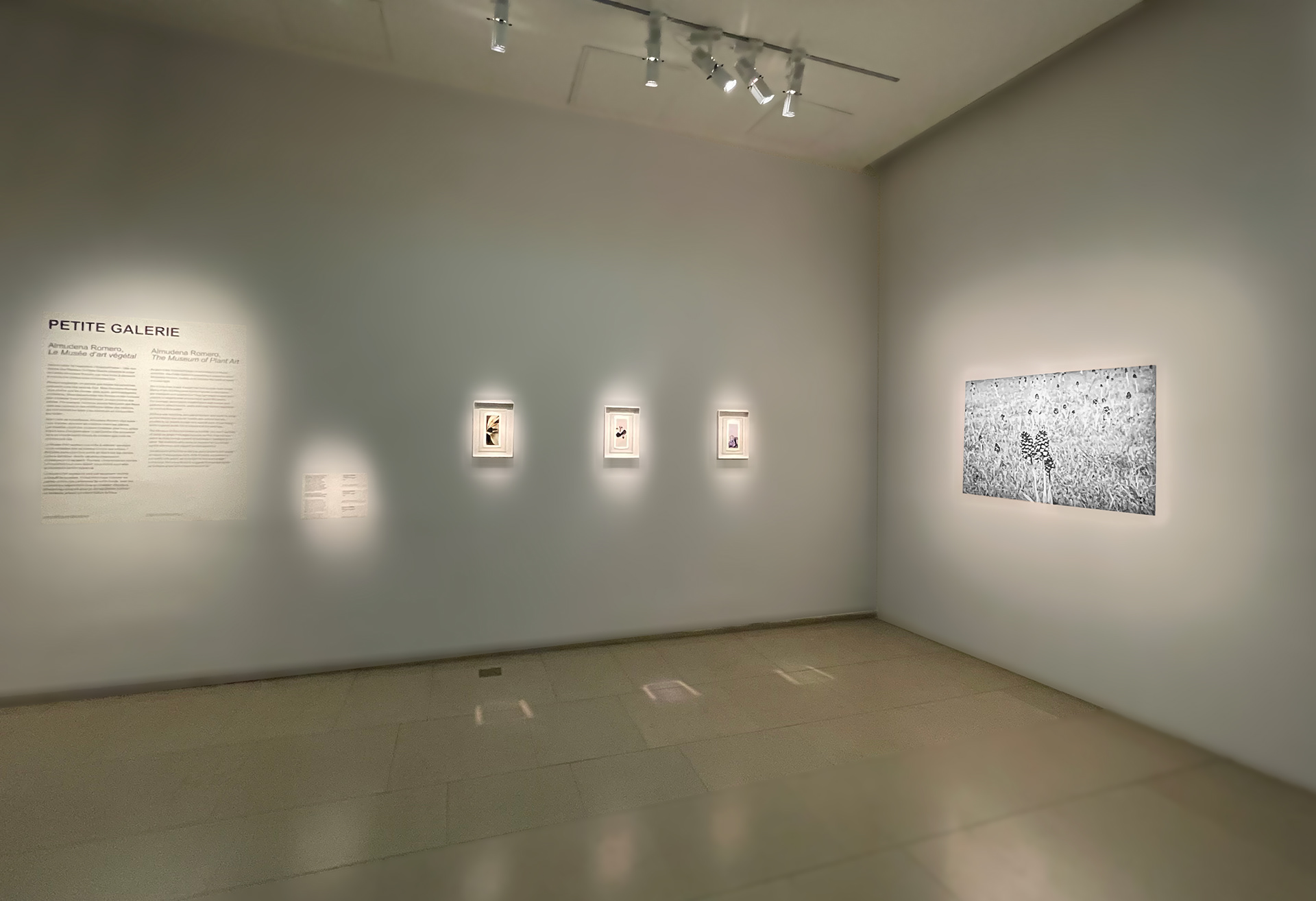

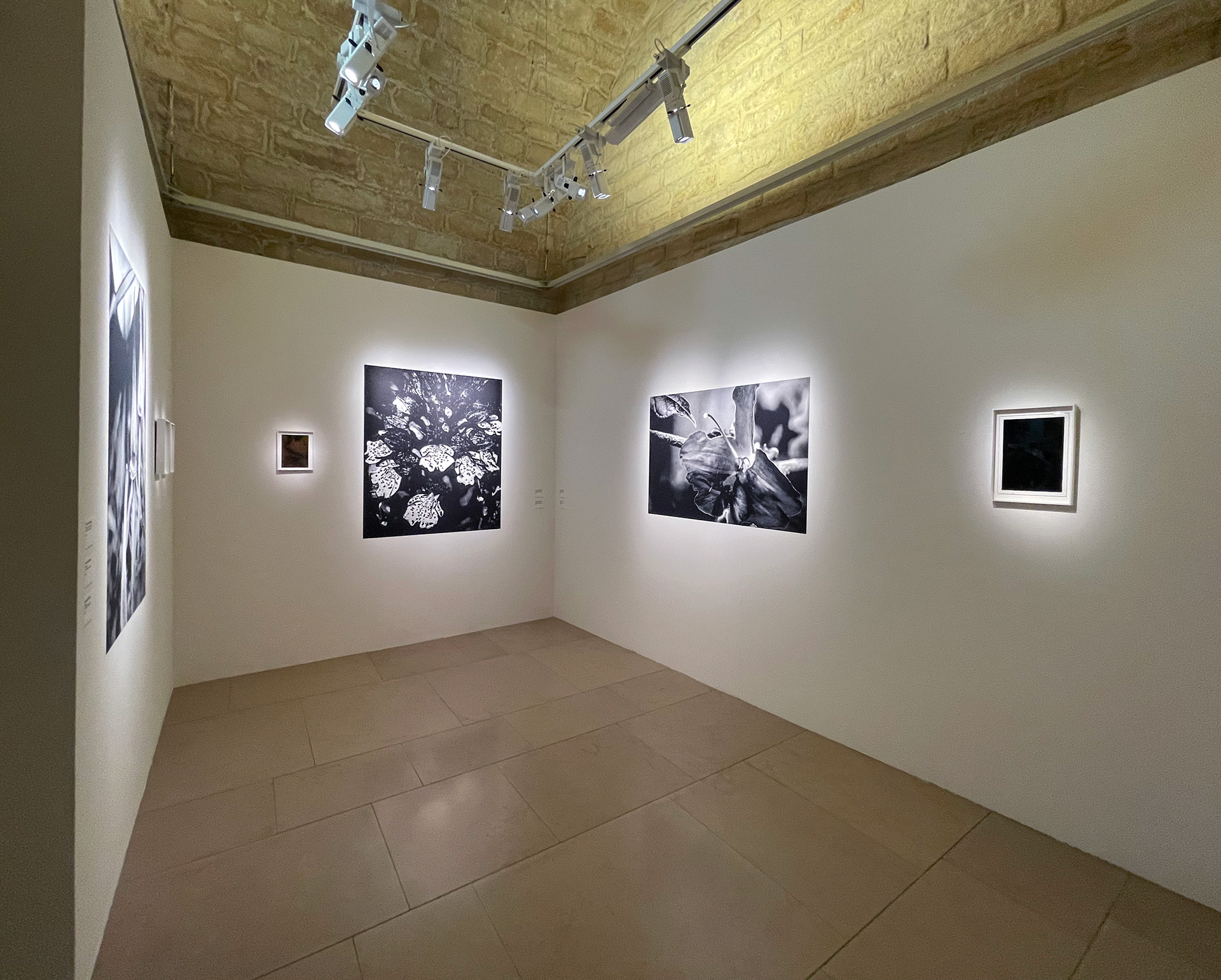
Chapelle des cordeliers Toulouse
Résidence 1+2 — Chapelle des cordeliers Toulouse
Oct 2023 - Nov 2023
Oct 2023 - Nov 2023
The first exhibition of The Museum of Plant Art was developed at the LIPME (Laboratoire des Interactions Plantes - Microbes - Environnement. INRAE/CNRS) as part of the Résidence 1+2 programme.
It focused on the range of intricate visual, auditory and olfactive experiences wildflowers provide to pollinators. It examined the immersive spaces flowers create and the strategies they put in place for their target audience, pollinators. This immersive exhibition recreated some of the elements of flower-pollinator interactions to facilitate discussion amongst exhibition audiences of their/the pollinator experience as an artistic one.
In this iteration, the Museum of Plant Art celebrated the complexity and beauty of plant colouration choices, using plant-based biodegradable iridescent materials donated by the University of Cambridge.
The exhibition also included the use of scents and tailor-made music for the space, reflecting on the harmonious vibration flowers and pollinators produce together.
This first exhibition was accompanied by a publication by Filigranes Editions and a day conference at the Museum of Contemporary Art Les Abattoirs in Toulouse.
Both the publication and the conference aimed to facilitate reflective debate and expand on the immersive exhibition experience with a series of contributions from leading philosophers, scientists, journalists, and art academics, fostering debate on us, our understanding of art and our understanding of Earth's co-habitants.
Photos of the opening night by Maxime Duhamel
